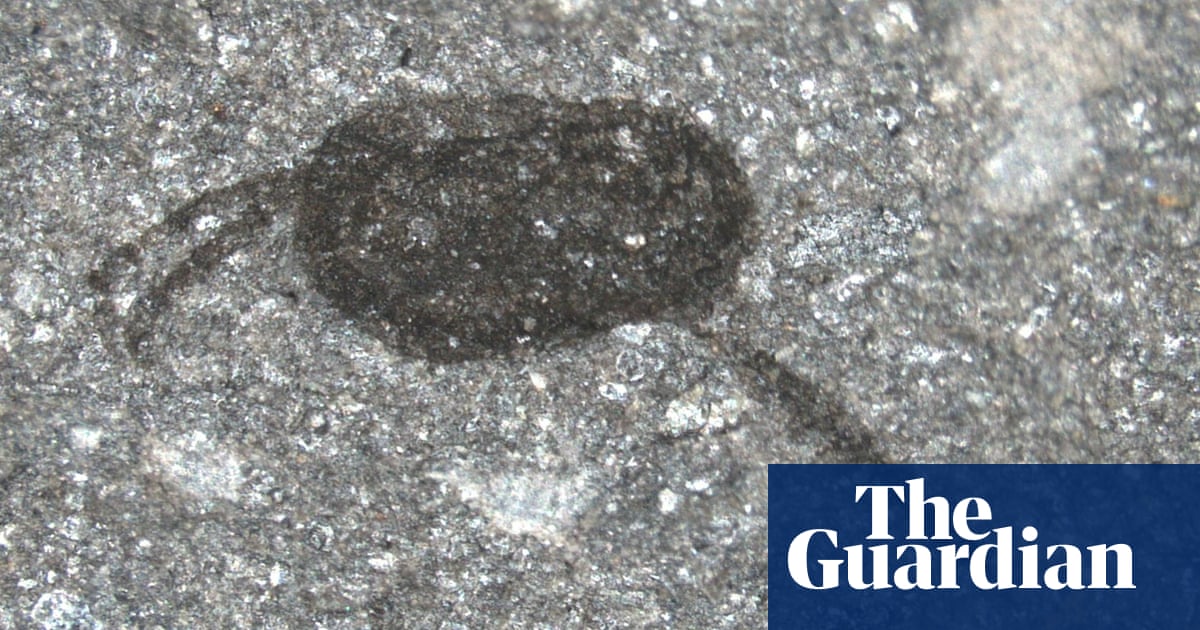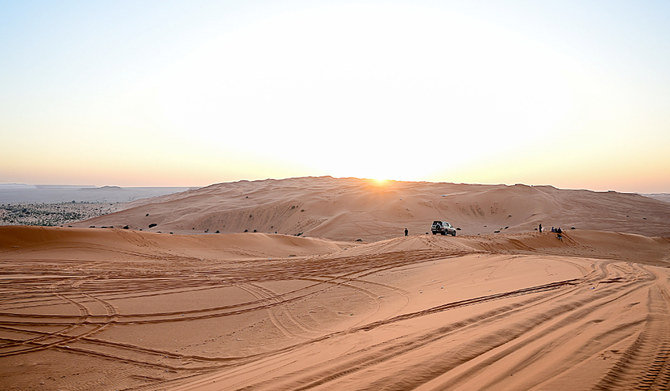
Many people discovered new interests closer to home as a result of Covid-19 lockdowns. For Dr Joseph Botting and Dr Lucy Muir, it was a 10-metre-wide quarry in a sheep field near to their home in Llandrindod, central Wales, which appeared to be teeming with tiny fossils.
Now researchers believe the site could help plug gaps in scientific understanding of how evolution proceeded after the Cambrian explosion – the period when the ancestors of most modern animals are believed to have evolved. It could even prove to be as important as the Burgess Shale in Canada that preserves one of the world’s first complex marine ecosystems, experts say.
The Welsh site, known as Castle Bank, dates from the Middle Ordovician period, about 460m-70m years ago. It represents a community of diverse and mostly diminutive (1mm to 5mm in body length) marine organisms that existed at a time when ocean covered what is now mid-Wales.
Many of the 170-odd fossils discovered so far have preserved soft tissues such as digestive systems, eyes, optic nerves and brains, and include worms, starfish, sponges, crustaceans and extinct arthropods.
The site is important because it gives us a new window into how life was evolving at the time. The Cambrian explosion, which occurred between 540m and 485m years ago, was a period when many new and complex life forms arose. But by 400m years ago, almost all of these creatures had disappeared, eventually replaced by the ancestors of many modern animals. The Castle Bank fossils could help to bridge that gap, providing an insight into how life was evolving at a time when there was virtually no life on land, but animals and algae were thriving in the seas.
Muir said: “It coincides with the Great Ordovician Biodiversification event, when animals with hard skeletons were evolving rapidly. I like to refer to it as ‘when life got interesting’. It is when ecology diversified, as well as animals themselves.”
Although other Ordovician fossil sites exist, most are older and preserve only a limited fauna, with few entirely soft-bodied animals. “Here, it seems, we’ve got everything,” said Botting.
The couple, both of whom have PhDs in palaeontology, but do not hold academic positions, discovered the site about a decade ago. However, it was only when the pandemic stopped them from travelling to work at Amgueddfa Cymru – Museum Wales – in Cardiff that they decided to take a closer look at the quarry, the precise location of which is being kept secret.
The small size of the fossils made them difficult to examine without high-power microscopes, so the quarry’s landowner suggested they crowdsource funds to buy the necessary equipment. Doing so quickly yielded about $20,000 (£16,000), more than twice the pair’s original goal. Researchers at Uppsala University in Sweden also dissolved some of the rock in hydrofluoric acid, and extracted minute fragments that showed cellular-level detail. The research is published in Nature Ecology And Evolution.
Botting said that despite the huge number of fossils already discovered, work has barely begun. “Every time we go back, we find something new, and sometimes it’s something truly extraordinary,” he said. “There are a lot of unanswered questions, and this site is going to keep producing new discoveries for decades. We’re excited to see what comes next.”












